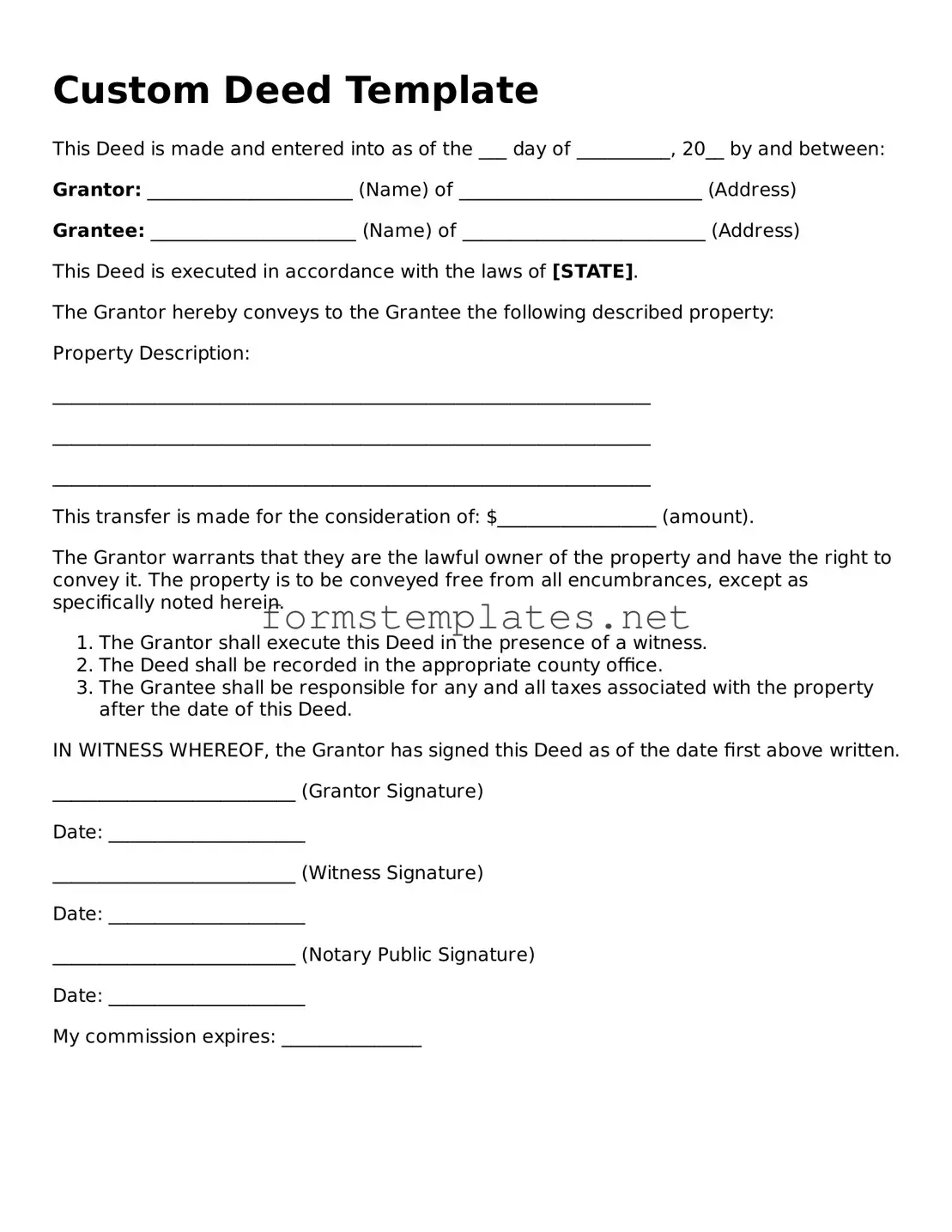Custom Deed Template
This Deed is made and entered into as of the ___ day of __________, 20__ by and between:
Grantor: ______________________ (Name) of __________________________ (Address)
Grantee: ______________________ (Name) of __________________________ (Address)
This Deed is executed in accordance with the laws of [STATE].
The Grantor hereby conveys to the Grantee the following described property:
Property Description:
________________________________________________________________
________________________________________________________________
________________________________________________________________
This transfer is made for the consideration of: $_________________ (amount).
The Grantor warrants that they are the lawful owner of the property and have the right to convey it. The property is to be conveyed free from all encumbrances, except as specifically noted herein.
- The Grantor shall execute this Deed in the presence of a witness.
- The Deed shall be recorded in the appropriate county office.
- The Grantee shall be responsible for any and all taxes associated with the property after the date of this Deed.
IN WITNESS WHEREOF, the Grantor has signed this Deed as of the date first above written.
__________________________ (Grantor Signature)
Date: _____________________
__________________________ (Witness Signature)
Date: _____________________
__________________________ (Notary Public Signature)
Date: _____________________
My commission expires: _______________
